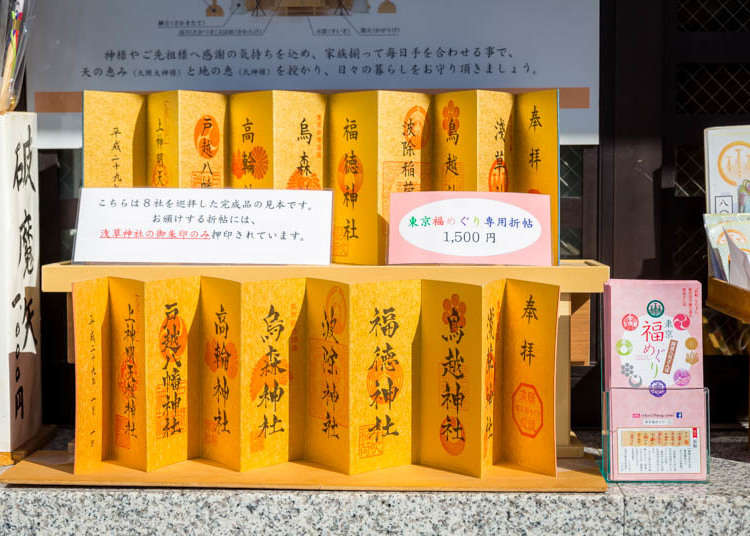
Want to see a more rural side of Tokyo, visit beautiful shrines, and bring back a special souvenir that you won’t find anywhere else? Then we highly recommend the Tokyo Jinja Good Luck Tour!
What is the Good Luck Tour?
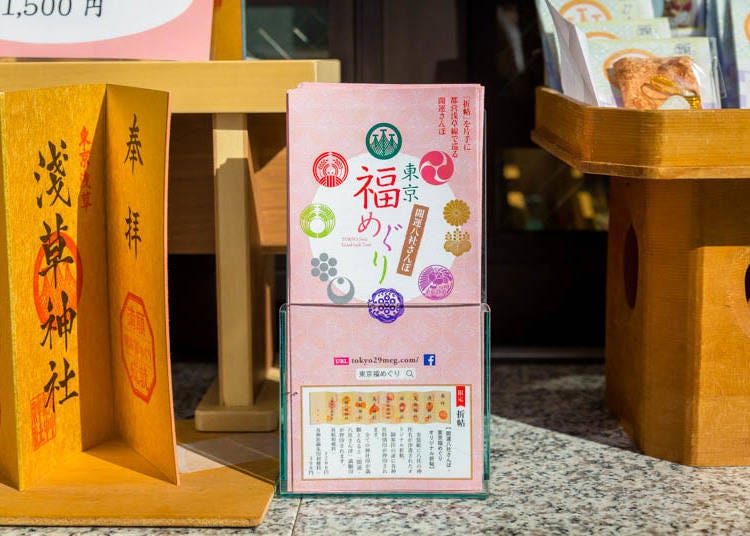
The Tokyo Jinja Good Luck Tour began in 2016 when several Shinto shrines around the Tokyo Metropolitan Subway Asakusa Line collaborated in an effort to revive tourism and spark awareness of the old shrines in the Tokyo area. The eight shrines participating in the Tokyo Jinja Good Luck Tour are:
- Kamishinmei-tenso Shrine
- Togoshi Hachiman Shrine
- Takanawa Shrine
- Karasumori Shrine
- Namiyoke Shrine
- Fukutoku Shrine
- Torikoe Shrine
- Asakusa Shrine
In order to promote the shrines, a special gold leaf folding book was created with the names of all 8 participating shrines. When you visit the shrines, you can have pages of the book stamped at each stop as proof of your visit. If you collect stamp impressions from all eight shrines, you will receive a special “Good Luck – 8 shrines” stamp and take home this special souvenir book to commemorate your journey.
How to Get Started with the Tokyo Jinja Good Luck Tour
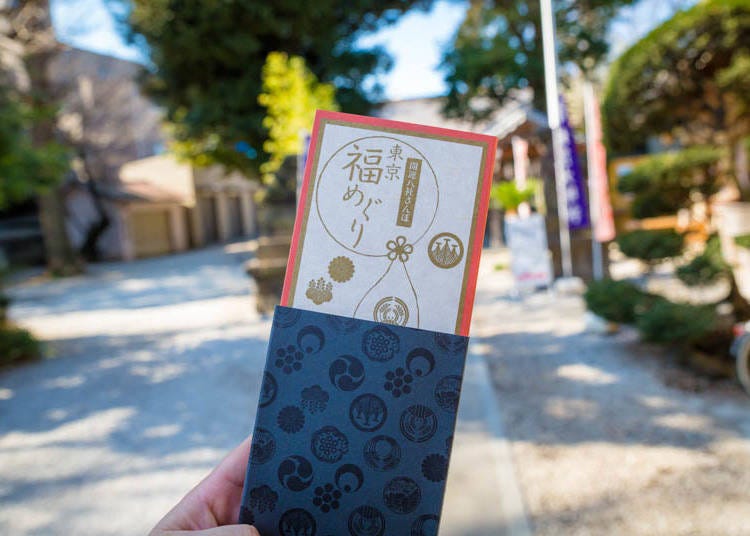
In order to start your journey to collect all the stamps, you will have to purchase the gold leaf folding book with the shrine names at one of the participating shrines for 1,200 yen. It is best to start at either Kamishinmei-tenso shrine or Asakusa Shrine, as the others are all in between these two shrines. Once you purchase your folding book, you can take the Toei Asakusa Line to the other shrines and buy their individual stamps for 300 yen each.
Please be aware that the shrine reception times are from 9:00 a.m. to 4:00 p.m. If no attendant is present, look for a bell or knock on the door to get the attendant’s attention. In total, the cost for all the stamps and the book will be 3,600 yen and the costs to travel to each station along the route will be about 1,250 yen in total. To save on the amount you spend on travel via train, you can buy a Toei One-day Pass for only 700 yen for adults (350 yen for children). Tickets may be purchased at ticket machines at all Toei Subway stations.
Once you have your day pass at the ready and with a handy Tokyo Jinja Good Luck Tour pamphlet that you can pick up at any of the participating shrines, you can begin your journey! For the sake of simplicity, we will start our tour from Kamishinmei-tenso shrine to Asakusa Shrine. Let’s Go!
Kamishinmei-tenso Shrine
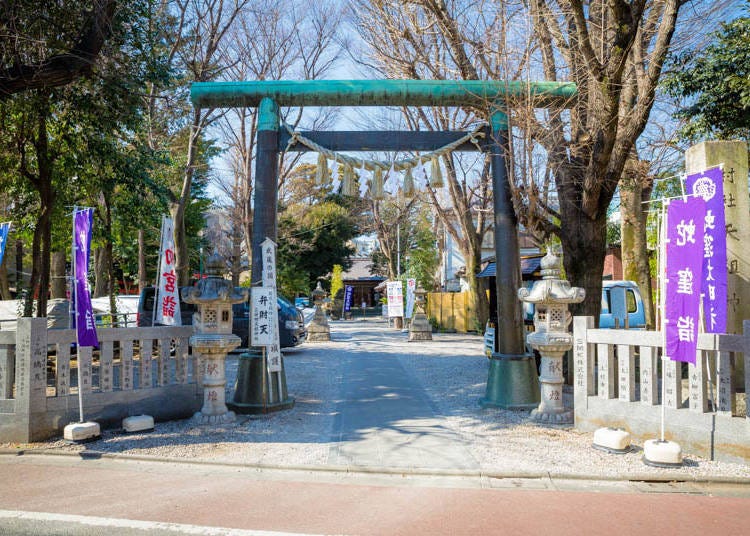
The first shrine in our journey can be found about 5 minutes from Toei Asakusa Line’s Nakanobu station. Originally founded in the Kamakura era (around 1322 AD), Kamishinmei-tenso shrine is home to a variety of enshrined Shinto gods and goddesses and holds a special place for locals. The history of the shrine shrine goes far back into the past. Around 1272, a local lord founded a temple in the area of Omori called Gonshou-ji and had his many vassals live in an area called Hebi-kubo (Snake Hollow). Fifty years after the temple was established, Musashi province (now known as Saitama) experienced a severe drought. Knowing that the drought would soon come to the Hebi-kubo area, the head priest of Gonshou-ji prayed to the Dragon-god shrine located at an old pond in the forest North-West of Gonshou-ji.

They say that thanks to the virtuous priest’s prayer and the dragon-god’s help, a great amount of rain began to fall and the Hebi-kubo area was saved from the oncoming drought. In order to give thanks to the dragon-god, a shrine was brought to Hebi-kubo to show appreciation. This shrine was originally called Shin-meisha shrine and through time, eventually became the Kamishinmei-tenso shrine we know today.
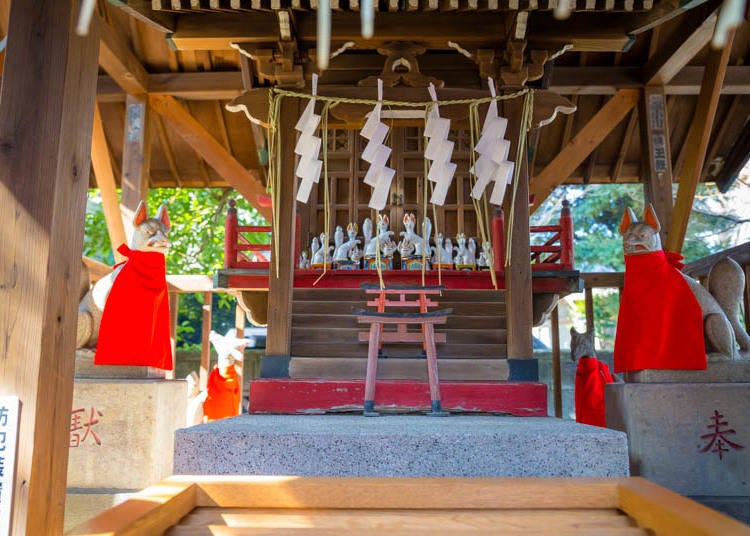
Other noteworthy shrines on the premises include the Inari shrine for good harvest, the Hakuja (White Snake) shrine, and the Benzaiten shrine, all of them living in harmony in the area. With a deep history, Kamishinmei-tenso shrine is a wonder to behold in the rural area of Hebi-kubo, now known as Nakanobu.
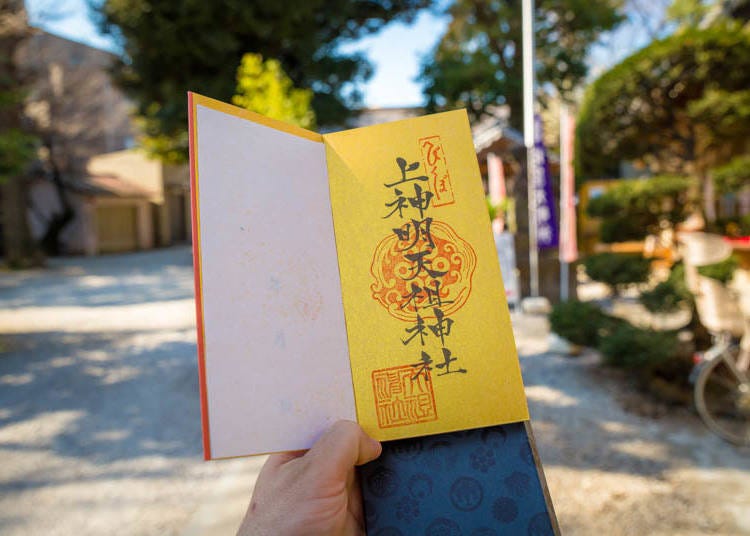
-
Kamishinmei-tenso Shrine上神明天祖神社
- Address 4 Chome-4-4-12 Futaba, Shinagawa-ku, Tōkyō-to 142-0043, Japan
-
Nearest Station
Nakanobu Station
- Phone Number 03-3782-1711
Togoshi Hachiman Shrine
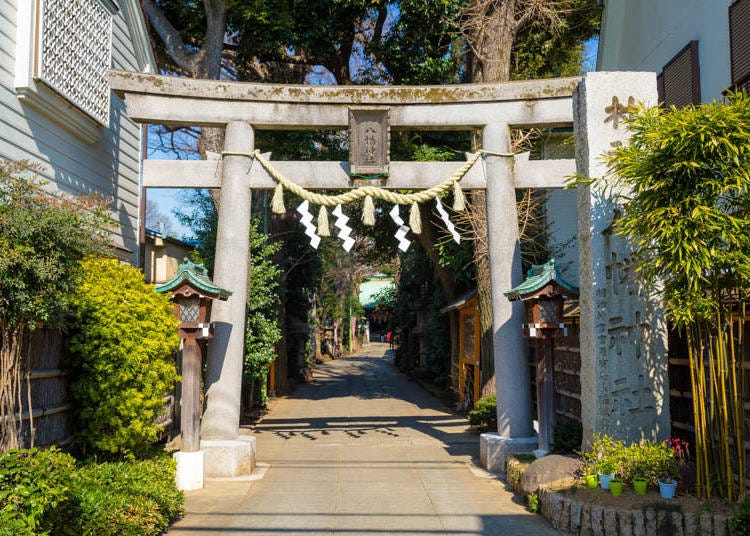
Our next shrine is located only a 10-minute walk from Togoshi station. The entrance is very beautiful and has a long walkway shrouded by trees. The shrine itself is right in the middle of the neighborhood, so you can hear the locals go about their daily lives. The Juyosho (where they sell charms, talismans, and more) is located to the right of the entrance, and this is where you can get your next stamp on your Tokyo Jinja Good Luck Tour.

While you get your stamp, you will also be treated to a snack and some green tea by the priests, a unique trait of Togoshi Hachiman shrine. You can take the snack and tea to the inner area, where you can sit comfortably and enjoy the atmosphere for a while.

The shrine itself is almost 500 years old, established in 1526, and its origins revolve around a story of a holy artifact that was found in a pond on the premises. A shrine was erected shortly after and the god Hondawake no Mikoto was enshrined there. The komainu dogs that are on the main path date back to 1746 and were donated by the villagers. There is a huge festival on the second weekend of September as well for those looking to experience a lively display when the mikoshi (portable shrines) are paraded about the local streets.

-
Togoshi Hachiman Shrine戸越八幡神社
- Address 2 Chome-6-23 Togoshi, 品川区 Tokyo 142-0041, Japan
-
Nearest Station
Togoshi Station
- Phone Number 03-3781-4186
Takanawa Shrine
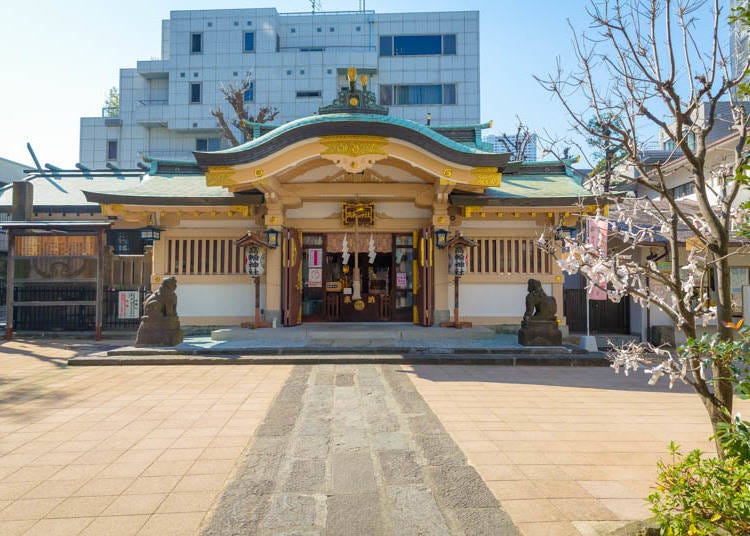
Up next on our Good Luck Tour is Takanawa Shrine. Located only a few minutes away from Sengakuji station, it is right next to a main road and you can spot the entrance to your right. Established in the Meio era (1492 – 1501), the shrine was originally an Inari Shrine, but was renamed in 1929.
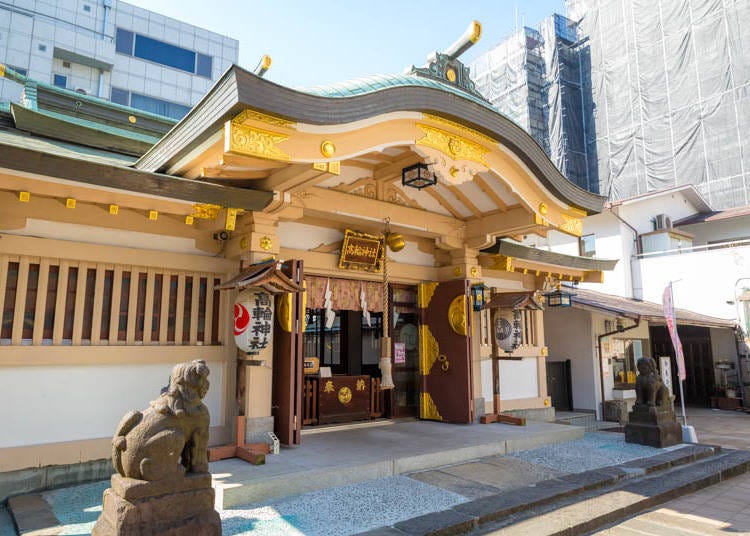
After climbing the stairs, you can see the Juyosho on your right hand side. After receiving your stamp, you can enjoy the tranquility of the area, surrounded by the busy city buildings.

-
Takanawa Shrine高輪神社
- Address Japan, 〒108-0074 Tokyo, Minato, Takanawa, 2 Chome−14−18
-
Nearest Station
Sengakuji Station
- Phone Number 03-3441-2719
Karasumori Shrine

After a quick trip on the Asakusa subway line, you should arrive at Shimbashi Station, which is located right in the middle of a popular area of restaurants, bars, and shops that are popular with the salarymen and -women of Tokyo. Not known to many, the area here used to be the sandy beaches of what was then Edo Bay (now Tokyo Bay). A huge pine forest covered the area and was a place where many birds gathered.

In the year of 940 one of the shoguns, Fujiwara no Hidesato prayed at an Inari shrine for victory against Taira no Masakado, when a white fox approached him and gifted him with white arrows to use in the upcoming battle. Emerging victorious in the battle, Fujiwara wanted to thank the white fox and wanted to create a shrine to honor it. While thinking about where to place the shrine, a vision came to him in a dream, with the white fox asking him to place the shrine in a place with many birds. Arriving at the current grounds of Karasumori, he found a spot that resembled his dream and proceeded to build the shrine to honor the white fox.

Nowadays, the shrine is very popular for the local residents as it has a few unique aspects. At most shrines, when you receive an Omikuji (fortune), it gives your fortune for all aspects of your life for the remainder of the year. However, at Karasumori shrine, you can receive an omikuji for each individual aspect of life: green (family and health matters), blue (work and studies), red (love), and yellow (business matters). After reading your fortunes, you can pray to the gods enshrined here, such as Uka-no-Mitama no Mikoto, to achieve your goals throughout the year.
With the wide variety of local restaurants and shops in the area, you can spend a lot of time in the vicinity of the shrine before heading to our next stop.

-
Karasumori Shrine烏森神社
- Address 2-15-5 Shinbashi, Minato, Tokyo 105-0004, Japan
-
Nearest Station
Shinbashi Station
- Phone Number 03-3591-7865
Namiyoke Shrine
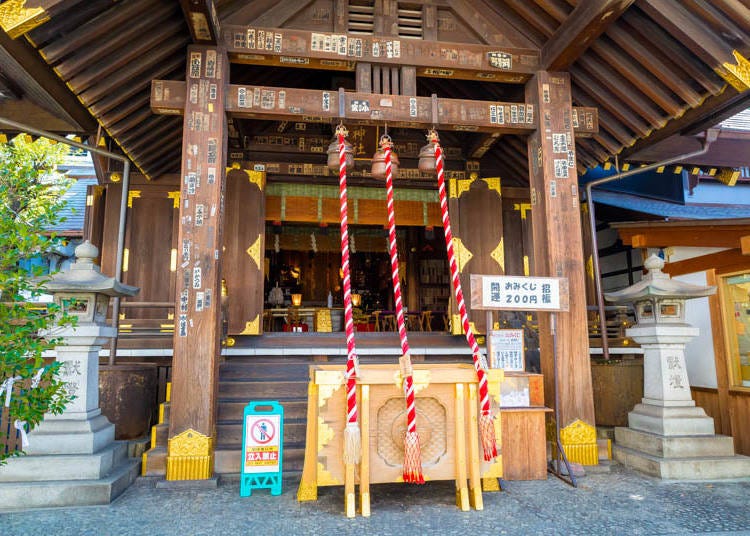
Located just past the famous Tsukiji market in Tokyo via Higashi-Ginza station, Namiyoke Inari shrine was built in the Manji era (1658 – 1661). Around that time, the land around Tsukiji was in the process of being reclaimed from the sea, and work was difficult due to the waves that kept breaking on the beach. It is said that after an image of Inari Myojin was floated on the sea, the work was finally able to be completed. Due to this event, the name of "Namiyoke” (protection from waves) was bestowed to the new shrine. Since the Edo period, Namiyoke shrine has been worshiped by the local people as a deity for a safe voyage.

Nowadays, the shrine is revered by the Tsukiji marketplace, its traders, and the local people. If you visit the shrine on June 10th, 2018 and every third year afterwards, you can see the Tsukiji Shishi Matsuri, where the shrine’s mikoshi and 2 beautifully decorated lion head motifs are paraded around the streets in a grand display. While you are here you can partake in some of the fresh seafood available for lunch, then visit the next shrine on our journey.
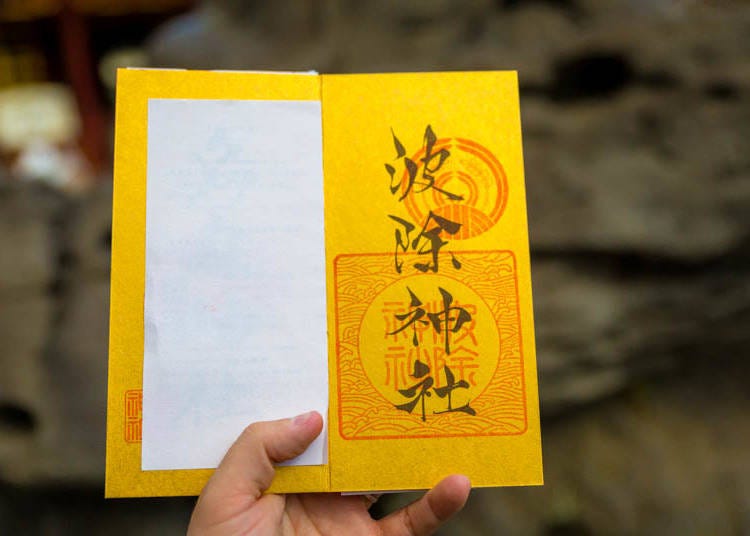
-

-
Address
6-20-37, Tsukiji, Chuo-ku, Tokyo, 104-0045
View Map -
Nearest Station
Tsukiji Station (Tokyo Metro Hibiya Line)
-
Address
6-20-37, Tsukiji, Chuo-ku, Tokyo, 104-0045
Fukutoku Shrine
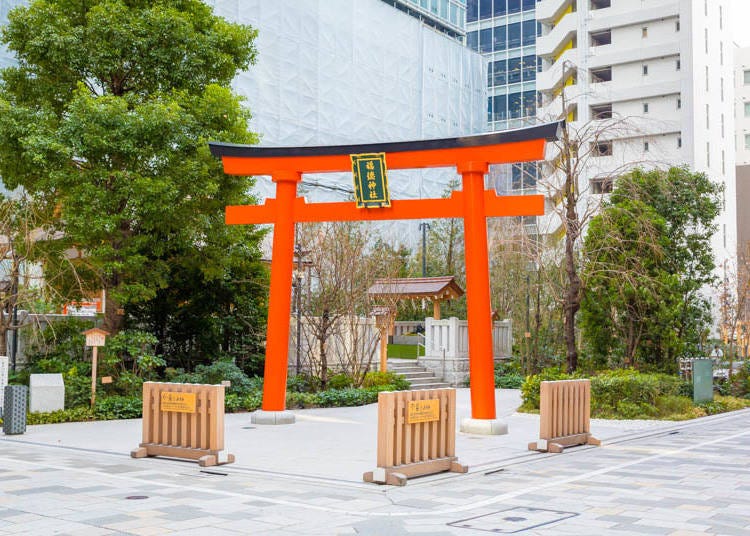
Our next shrine visit takes us to Fukutoku shrine located a 10-minute walk from the Asakusa line’s Nihombashi station. Located in the middle of a shopping and business district, this elegant and cozy shrine is known for bringing good luck and has several prestigious people and deities enshrined on the grounds. The list includes Tokugawa Ieyasu, known for establishing the Tokugawa Shogunate in Edo and Ota Dokan who was a military commander and built Edo Castle, plus the gods Uka-no-Mitama no Mikoto who presides over grain, and Benzaiten the goddess of love and luck.

Although it is not specifically known when the shrine was constructed, records date back to 859 and 876 AD. During the Edo period, the Tokugawa family was known to frequently worship at the shrine because of its name “Fukutoku”, which could be loosely translated to “bringing good fortune to Tokugawa.” The shrine was damaged during the Great Kanto Earthquake and was burnt down during World War II, but it was later rebuilt and has resided in its current location since 1973.
After enjoying the sights and getting your stamp, take a bit of time to explore the nearby shopping area before heading out to the next shrine on our list.
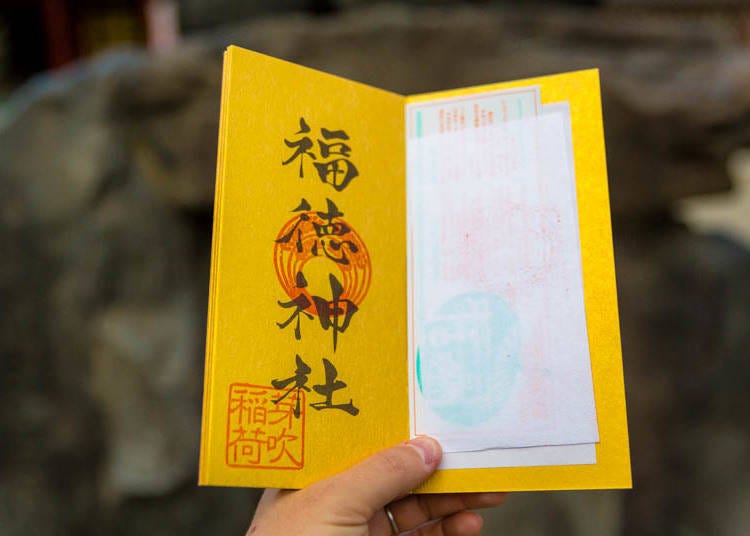
-
Fukutoku Shrine福徳神社
- Address Japan, 〒103-0022 Tokyo, Chuo-ku Nihonbashimuromachi, 2−4−14
-
Nearest Station
Nihombashi Station
- Phone Number 03-3276-3550
Torikoe Shrine
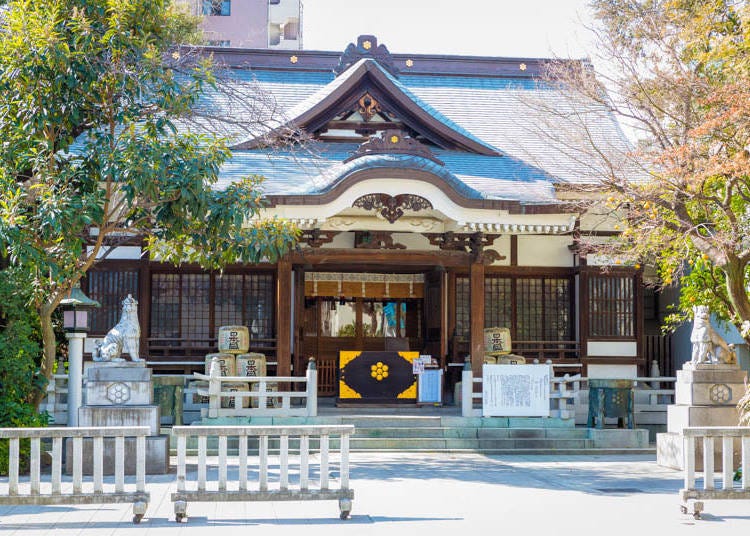
Approaching the Asakusa area of Tokyo, our next stop is Torikoe shrine and it is located about a 5-minute walk from the Asakusa Line’s Kuramae station. Torikoe is well known in the surrounding area for having the heaviest mikoshi in Tokyo, weighing in at over 3,700 kilograms! This massive mikoshi is paraded around the local streets every year on June 9th, starting as early as 6:30 in the morning.

Torikoe shrine itself was built in 651 and is dedicated to Yamato-takeru no Mikoto, Amanokoyano no Mikoto, and Tokugawa Ieyasu. On January 8th, they hold the Tondo-yaki where New Year decorations and the preceding year’s charms and talismans are gathered and burned. There are many other festivals going on throughout the year as well, so make sure to inquire at the shrine for dates and times.

-
Torigoe Shrine烏越神社
- Address 2-4-1 Torigoe, Taito, Tokyo 111-0054, Japan
-
Nearest Station
Kuramae Station
- Phone Number 03-3851-6033
Asakusa Shrine
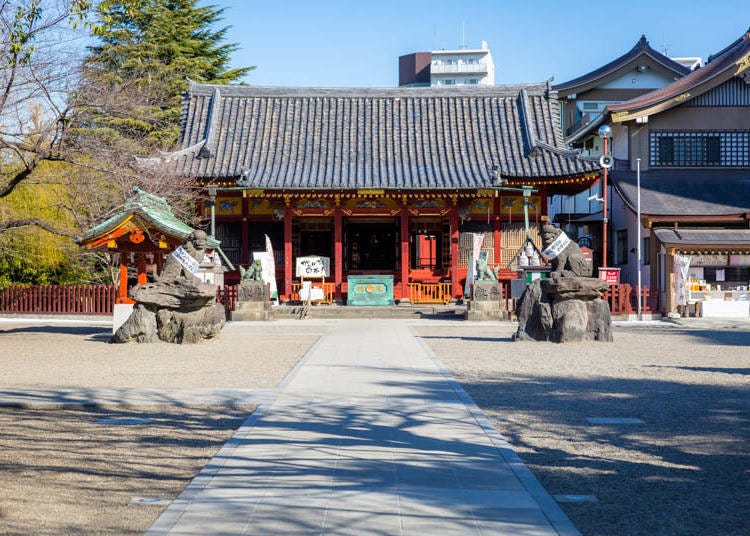
Our last shrine takes us to the heart of the Asakusa area and is rightly called Asakusa shrine. Located only minutes away from Asakusa station, it is right next door to the famous, much-photographed Senso-ji.

As legend has it, about one thousand and three hundred years ago, two fishermen brothers (Hinokuma Hamanari and Hinokuma Takenari) found a statue of Kannon caught in their fishing net in the Sumida River. Soon after hearing about this, a wealthy landlord named Hajino Matsuchi approached the brothers, delivering a sermon about the Buddha. The brothers were impressed with the sermon and soon after converted to Buddhism. The statue of Kannon was enshrined in a small temple which eventually became known as Senso-ji.

In order to honor the three men that were the origin of Senso-ji, Tokugawa Iemitsu ordered this Asakusa shrine (also known as Sanja-Sama) built in 1649 to worship them. During the Tokyo air raids of 1945, many of the buildings and structures in the surrounding area were destroyed, but the Asakusa shrine survived the raids and was designated an Important Cultural Property by the Japanese government in 1952.
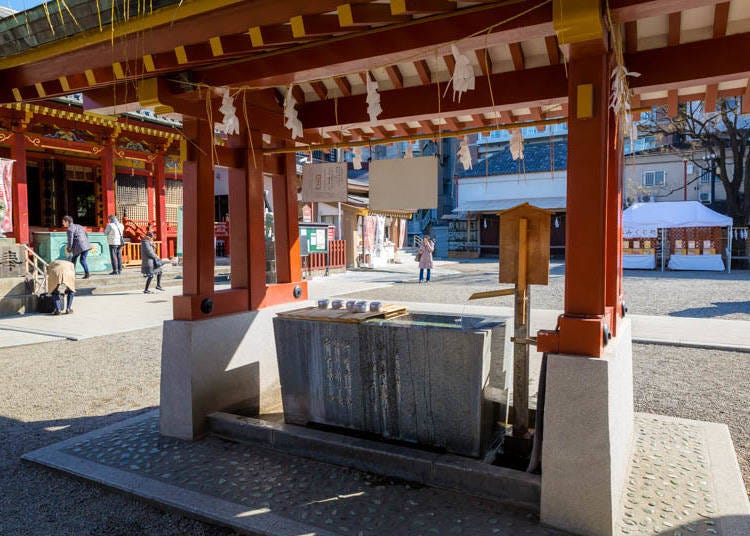
If you visit Asakusa shrine, we recommended that you come around the third week of May, when the Sanja Matsuri is under way. This festival is held every year and is considered one of the great Shinto festivals in the Tokyo area. The 3-day festival honors the three men who founded Senso-ji and attracts around 2 million locals and tourists every year.
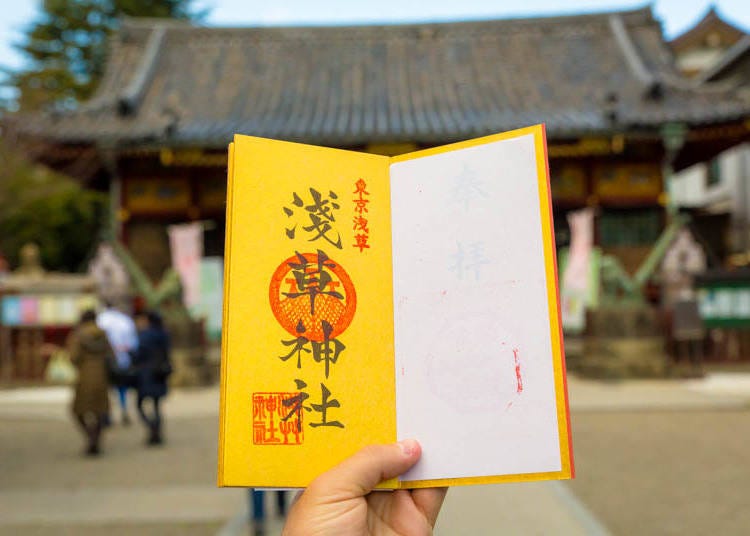
-
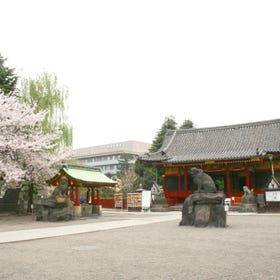
-
Address
2-3-1, Asakusa, Taitou-ku, Tokyo, 111-0032
View Map -
Nearest Station
Asakusa Station (Tokyo Metro Ginza Line / Toei Asakusa Line / Tobu Isesaki Line (Tobu Sky Tree Line) / Tsukuba Express)
7 minutes on foot
- Phone Number 03-3844-1575
-
Address
2-3-1, Asakusa, Taitou-ku, Tokyo, 111-0032
Completing the Tokyo Jinja Good Luck Tour
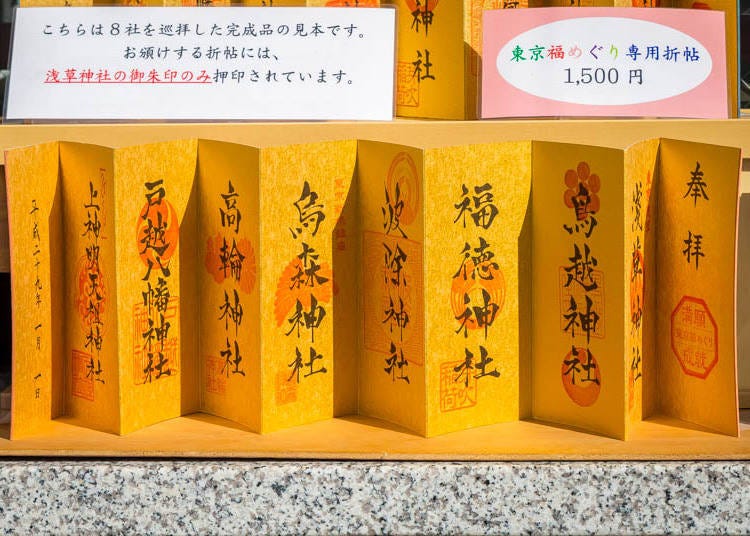
When you collect the last stamp, you will receive a final stamp for the last page of the folding book to commemorate your pilgrimage to all 8 shrines, as well as the date on the first page being filled in. Enjoy your fully stamped book and the hundreds of years of history that you have visited on your journey. You’ve earned a good rest!

We at LIVE JAPAN hope you have a great time learning about the history of these unique and beautiful shrines in the Tokyo area. Hopefully you were able to witness some of the festivals mentioned in the article as well! If you haven’t started the Tokyo Jinja Good Luck Tour, what are you waiting for! It’s a great way to explore the city for new and old travelers to Tokyo!
- Area
- Category
*Prices and options mentioned are subject to change.
*Unless stated otherwise, all prices include tax.
Limited time offer: 10% discount coupons available now!
Recommended places for you
-
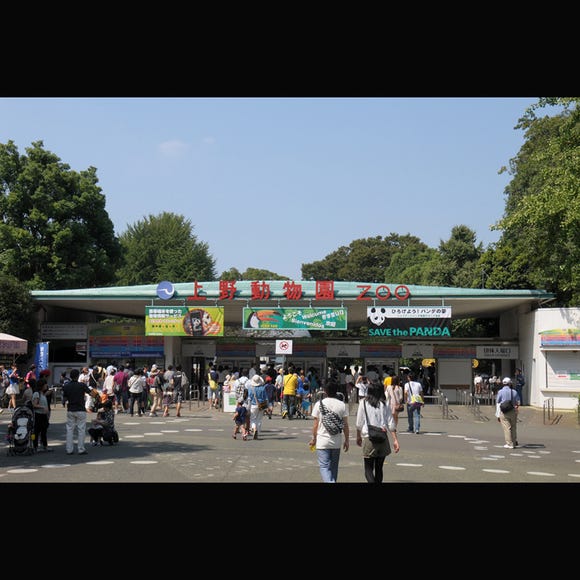
Ueno Zoo (Ueno Zoological Gardens)
Zoos, Aquariums & Botanical Gardens
Ueno
-

The Tokyo Station Marunouchi Building
Landmarks
Tokyo Station
-

Tokyo Disney Sea®
Theme Parks
Chiba Suburbs
-
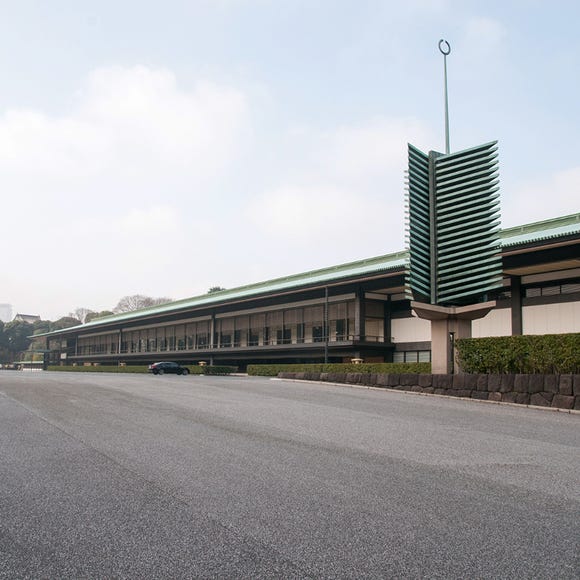
The Imperial Palace
Other Architecture
Tokyo Station
-

Tokyo Metropolitan Government
Landmarks
Shinjuku
-
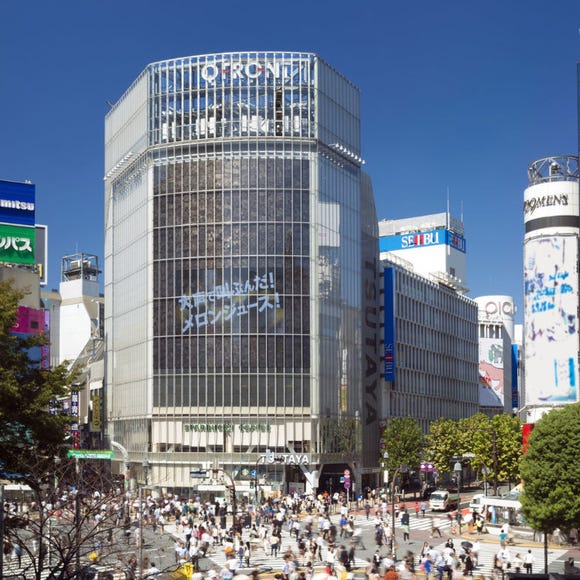
Shibuya Crossing
Downtown
Shibuya
-

Professional Photos Even Beginners Can Shoot! 10 Tips for Taking Stunning Cherry Blossom Photos
-

Discover Osaka Station City: A Journey Through Its Most Fascinating Spots
-

Step Into the Story: Inside Immersive Fort Tokyo
-

The CASIO S100: How CASIO's Masterpiece Calculator Redefines Business Elegance With Japan-Made Reliability
-

Where to Eat in Shibuya: 14 Must-Try Restaurants for Yakiniku, Sushi, Izakayas, Cafes and More
-

Where to Eat in Yokohama: 10 Must-Try Restaurants for Yakiniku, Izakayas, Unique Dining & More
-
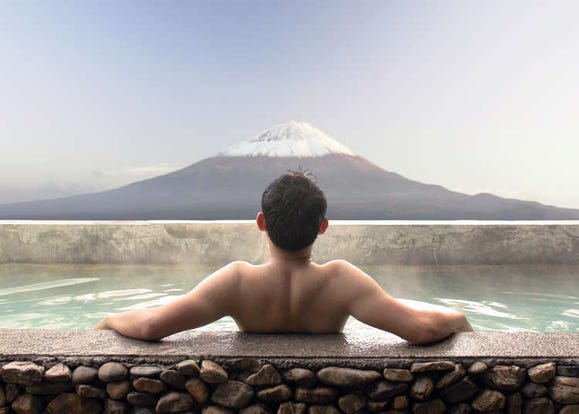
Japan's Bath Culture: Tips You Should Know!
-
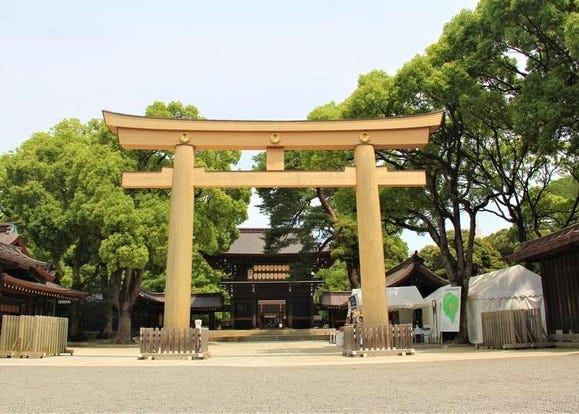
Hatsumode in Tokyo: 5 Recommended Places to Enjoy Japan's New Year
-
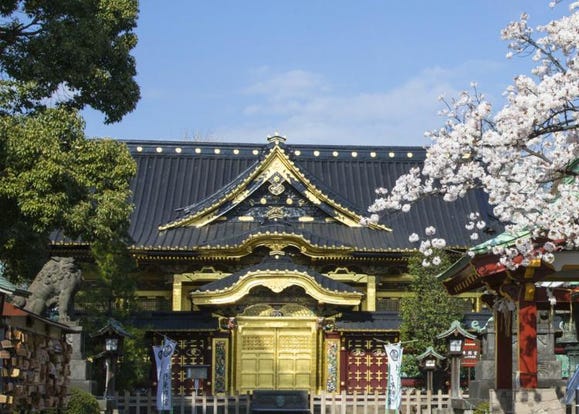
Tokyo Culture Trip: Top 10 Most Popular Shrines in Tokyo and Surroundings (August 2019 Ranking)
-
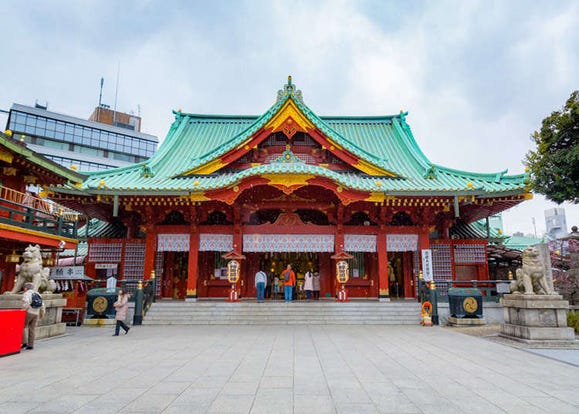
Kanda Myojin – Akihabara’s Iconic Shrine
-
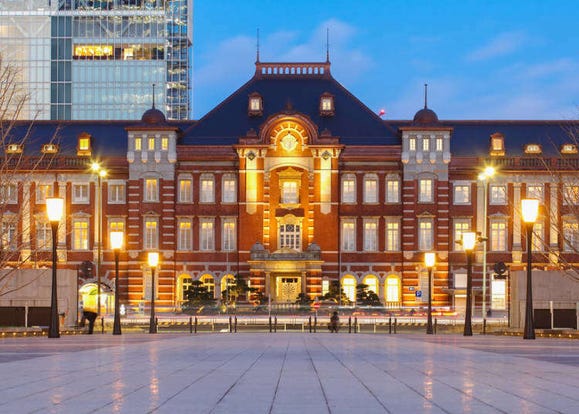
Exploring Tokyo: 3 Must-Visit Spots around Tokyo Station
-
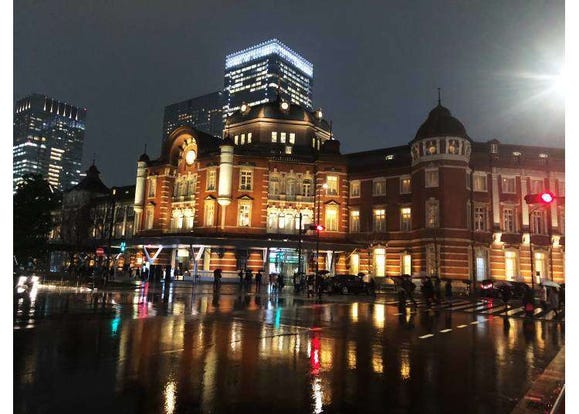
Exploring Tokyo Station: 10 Must-Visit Spots Around the Heart of Tokyo
- #best ramen tokyo
- #what to buy in ameyoko
- #what to bring to japan
- #new years in tokyo
- #best izakaya shinjuku
- #things to do tokyo
- #japanese nail trends
- #what to do in odaiba
- #onsen tattoo friendly tokyo
- #daiso
- #best sushi ginza
- #japanese convenience store snacks
- #best yakiniku shibuya
- #japanese fashion culture
- #best japanese soft drinks














